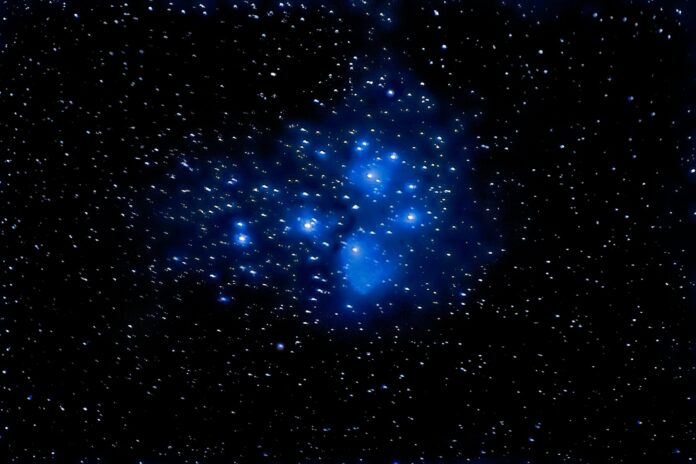The familiar “Seven Sisters” star cluster, known as the Pleiades, shines bright in winter skies. But new research reveals that this celestial sight is merely the brightest part of an enormous family—a sprawling collection of stars stretching far beyond what we’ve previously recognized. This groundbreaking discovery reshapes our understanding not just of the Pleiades itself but also offers a fresh perspective on how stars form and organize in our galaxy.
Astronomers at the University of North Carolina at Chapel Hill made this revelation by combining data from two powerful space telescopes: NASA’s Transiting Exoplanet Survey Satellite (TESS) and the European Space Agency’s Gaia. These observations revealed thousands of hidden “siblings” scattered across the cosmos, a vast network christened the Greater Pleiades Complex. This finding more than doubles the estimated size of the cluster, highlighting its true scale—a whopping 20 times larger than previously thought.
Unveiling Stellar Family Ties
Most stars, including our sun, originate in groups, but over eons these siblings disperse, making it challenging to trace their origins. To solve this cosmic puzzle, researchers turned to a unique “cosmic clock”: stellar spin rates. Young stars spin rapidly, while older stars rotate more leisurely. By analyzing the rotational speeds of thousands of stars through TESS data and precisely mapping their positions and movements using Gaia observations, the team uncovered long-lost members of the Pleiades family scattered throughout the sky.
“We’re no longer looking at just seven bright stars in the night sky,” explained Andrew Boyle, lead author and graduate student in physics and astronomy at UNC-Chapel Hill, “but rather a vast collection of thousands of dispersed siblings woven across the entire celestial tapestry.” This groundbreaking research transforms our perception of the Pleiades from a compact cluster into the dense core of an enormous, dissolving stellar association.
Implications Reaching Far Beyond Astronomy
These findings reach far beyond astronomical mapping. The Pleiades is more than just a scientific target; it holds cultural significance globally. It features prominently in ancient texts like the Old Testament and Talmud, is celebrated as Matariki in New Zealand, and even graces the Subaru logo in Japan. This discovery adds new layers of depth to these cultural touchstones.
“Our work reveals that many stars near our sun likely belong to vast extended families with complex structures,” remarked Andrew Mann, co-author and professor of physics and astronomy at UNC-Chapel Hill. “This approach gives us a new way to uncover these hidden relationships.”
By applying this stellar rotation technique, astronomers anticipate uncovering numerous additional sprawling stellar families throughout the galaxy, challenging our understanding of star clustering and revealing a more interconnected cosmic neighborhood. Future studies may even illuminate the origins of our own sun, helping determine if it too emerged from a vast family group billions of years ago.
“Measuring how stars spin lets us identify groups too scattered to detect with conventional methods,” Boyle concluded. “This opens a brand-new window into the hidden architecture of our galaxy.”
The exploration of stellar families like the Pleiades provides critical insights into star and planet formation, offering crucial clues to unraveling how solar systems – including our own – evolve over cosmic timescales.
